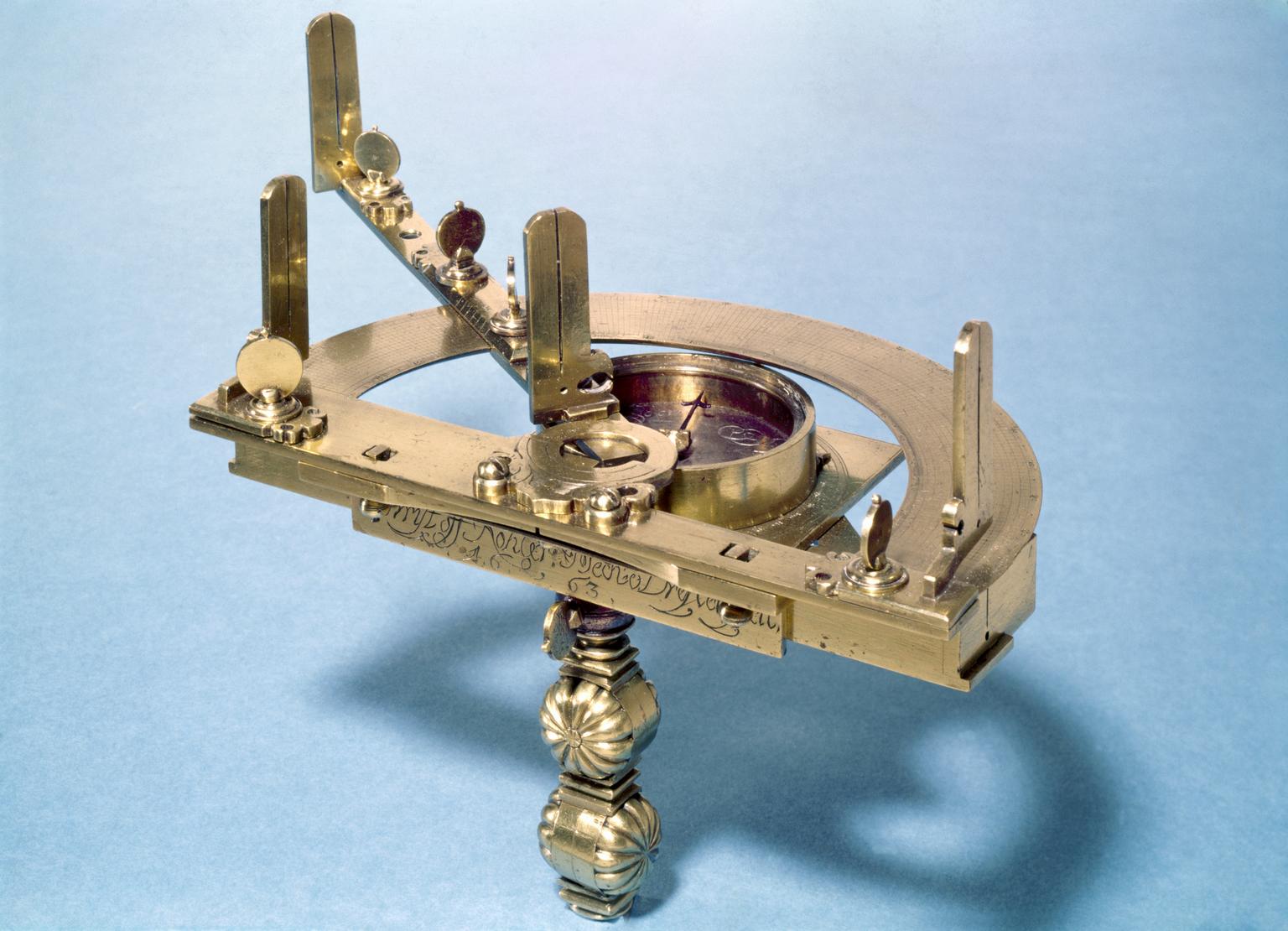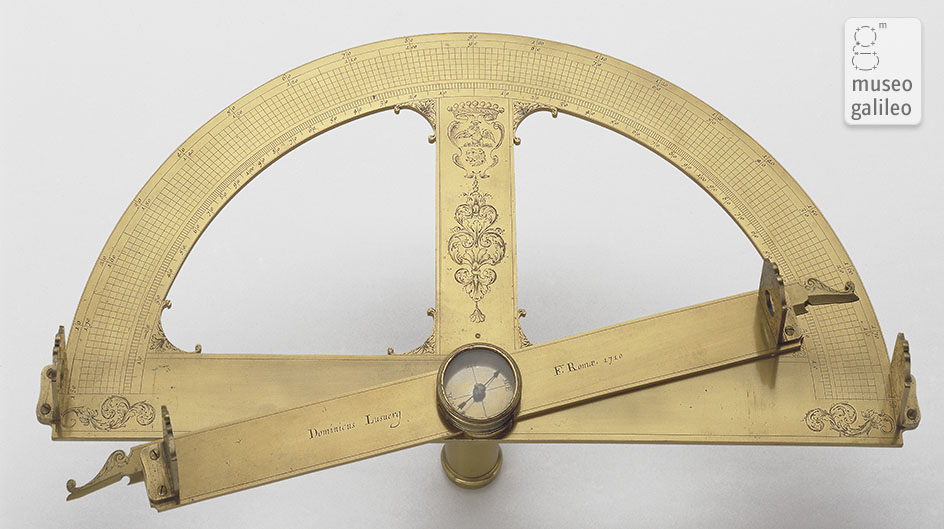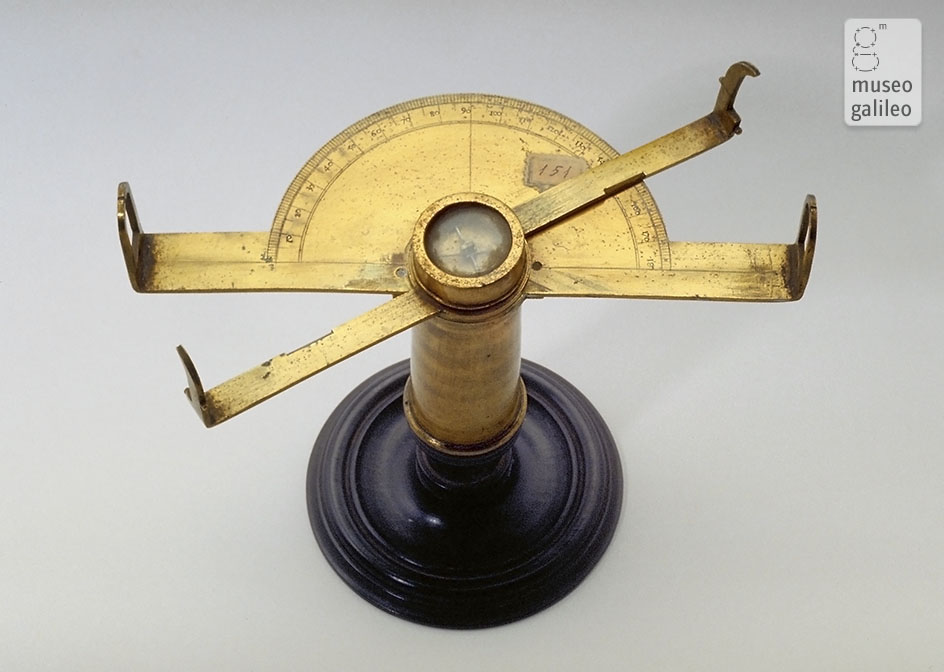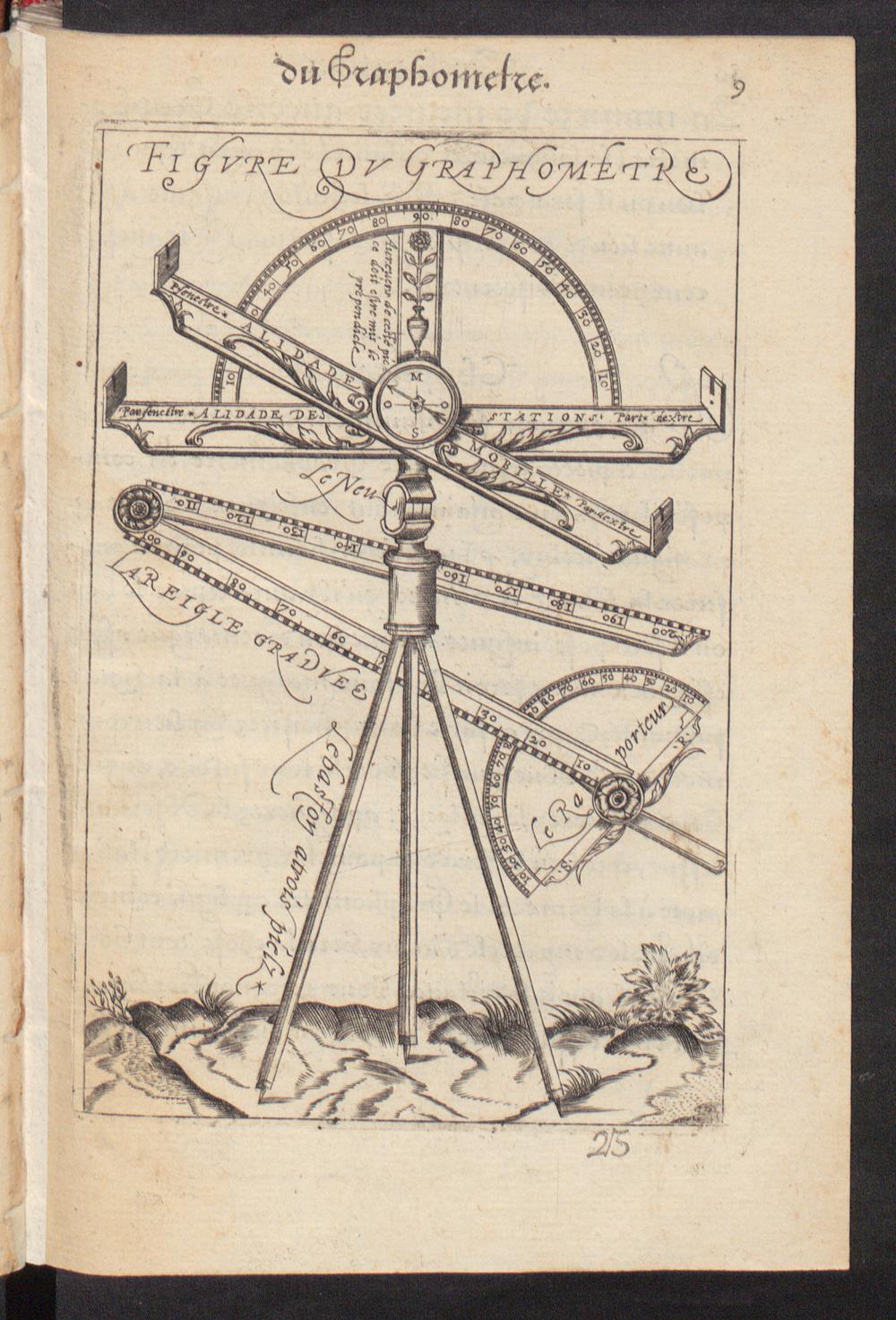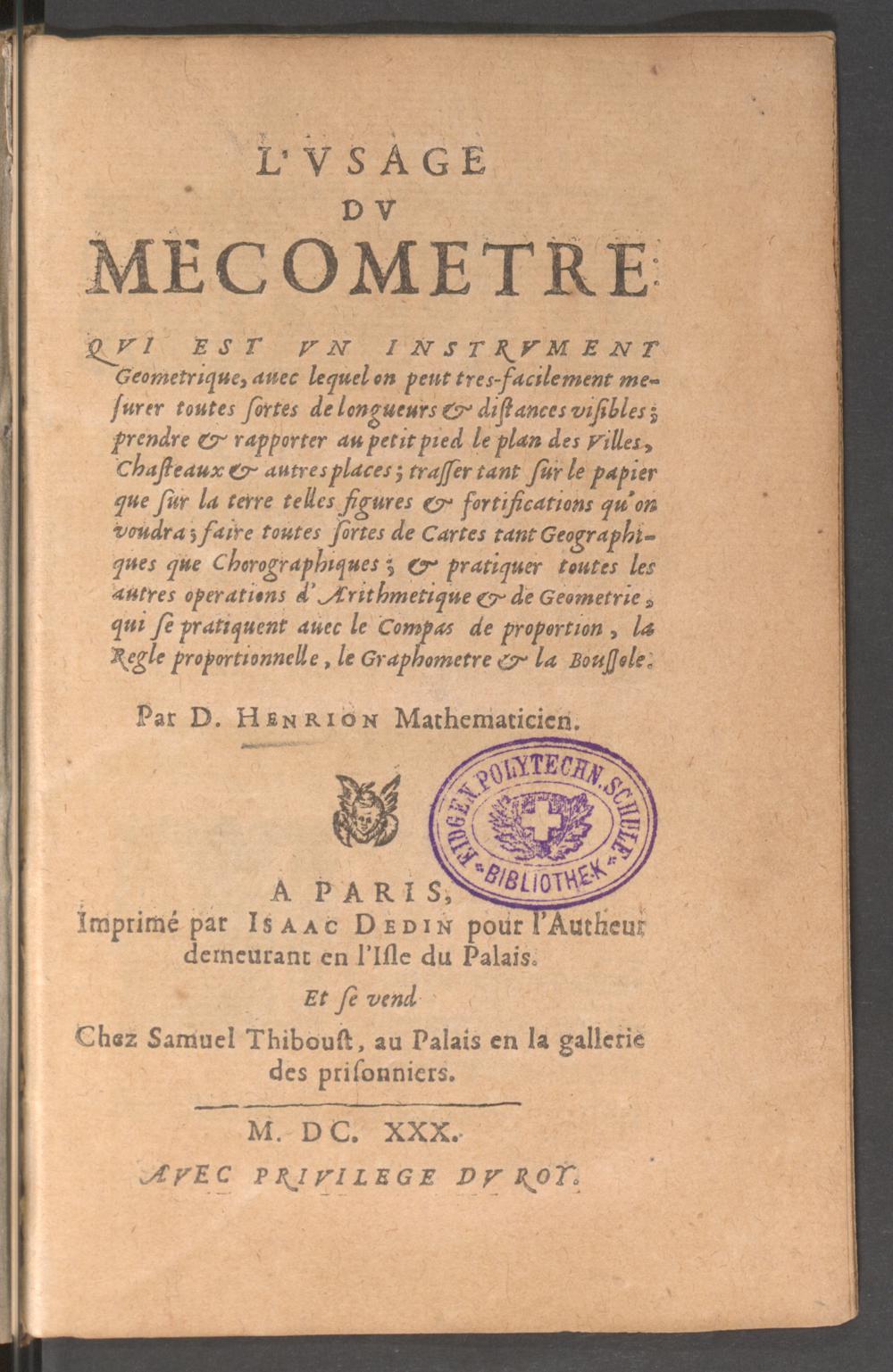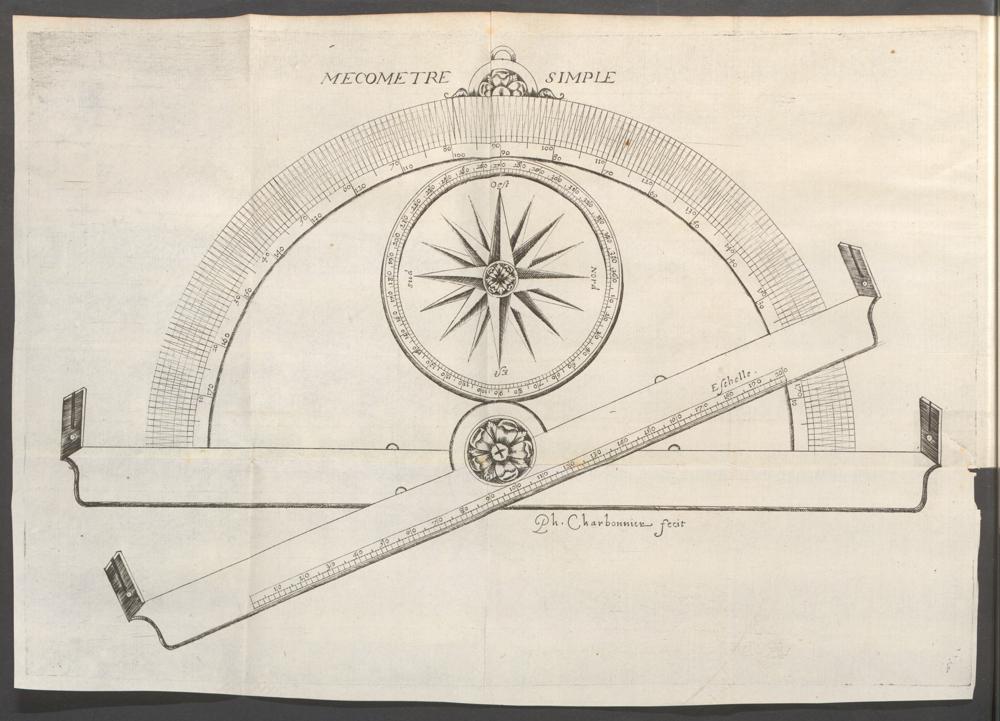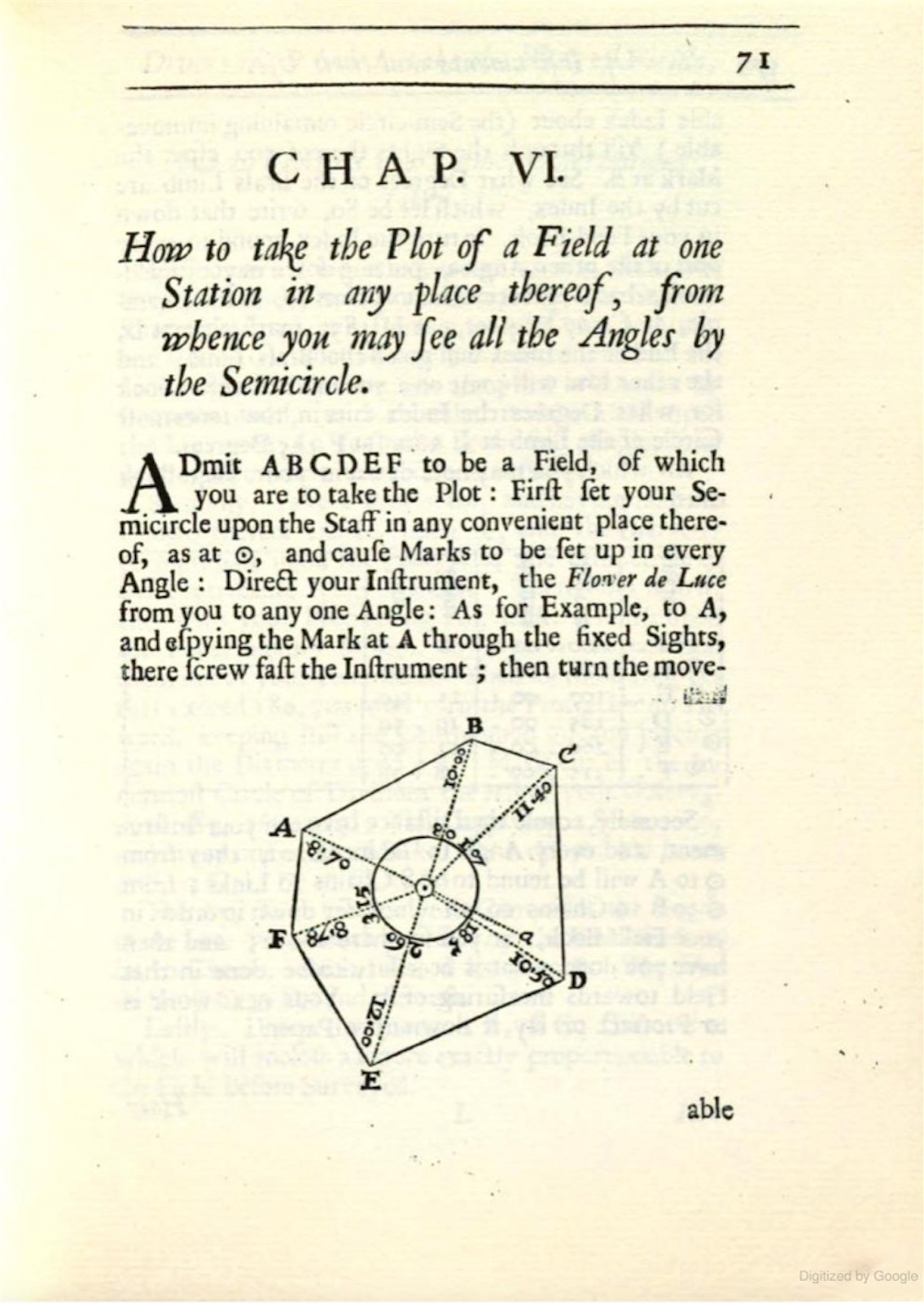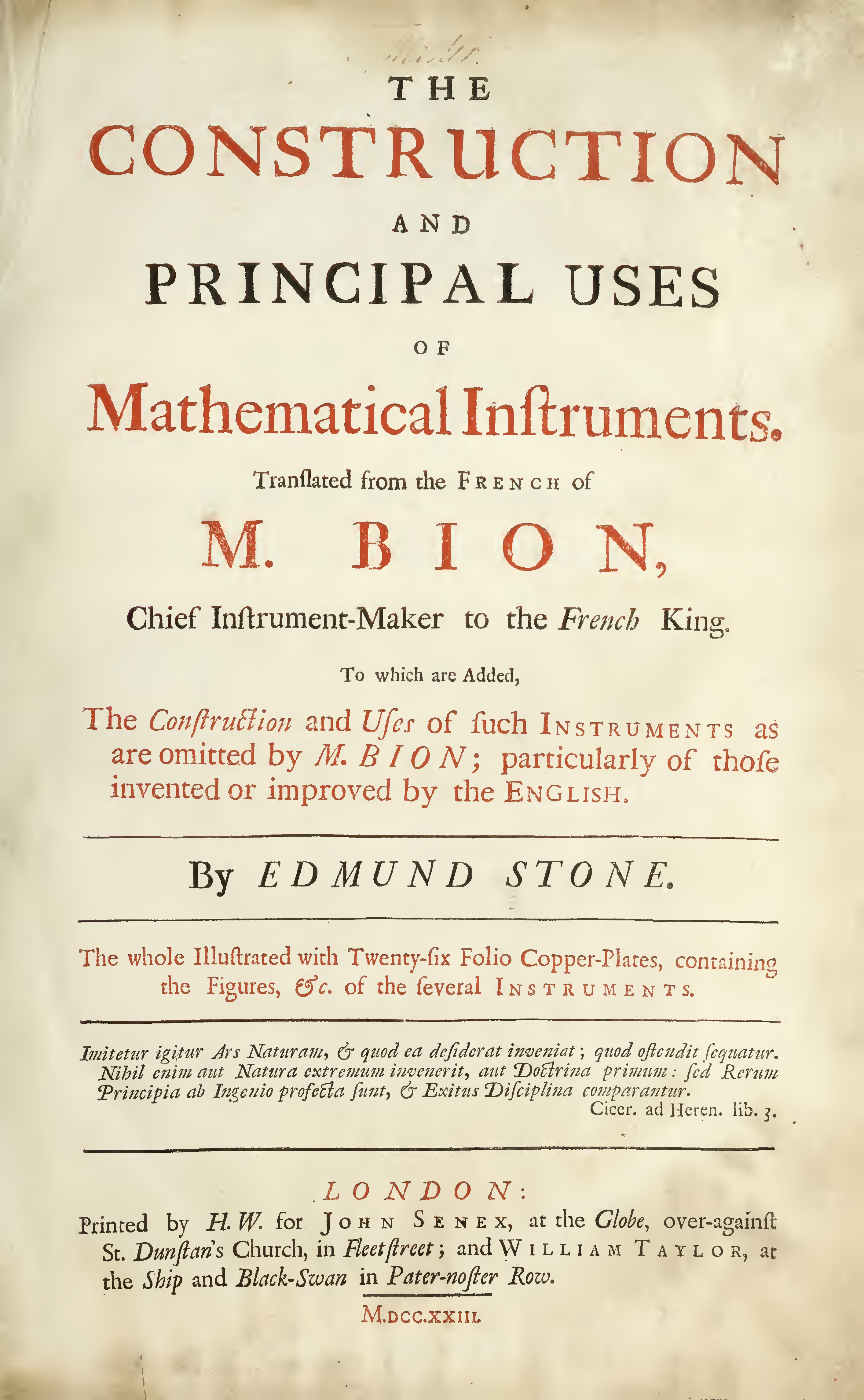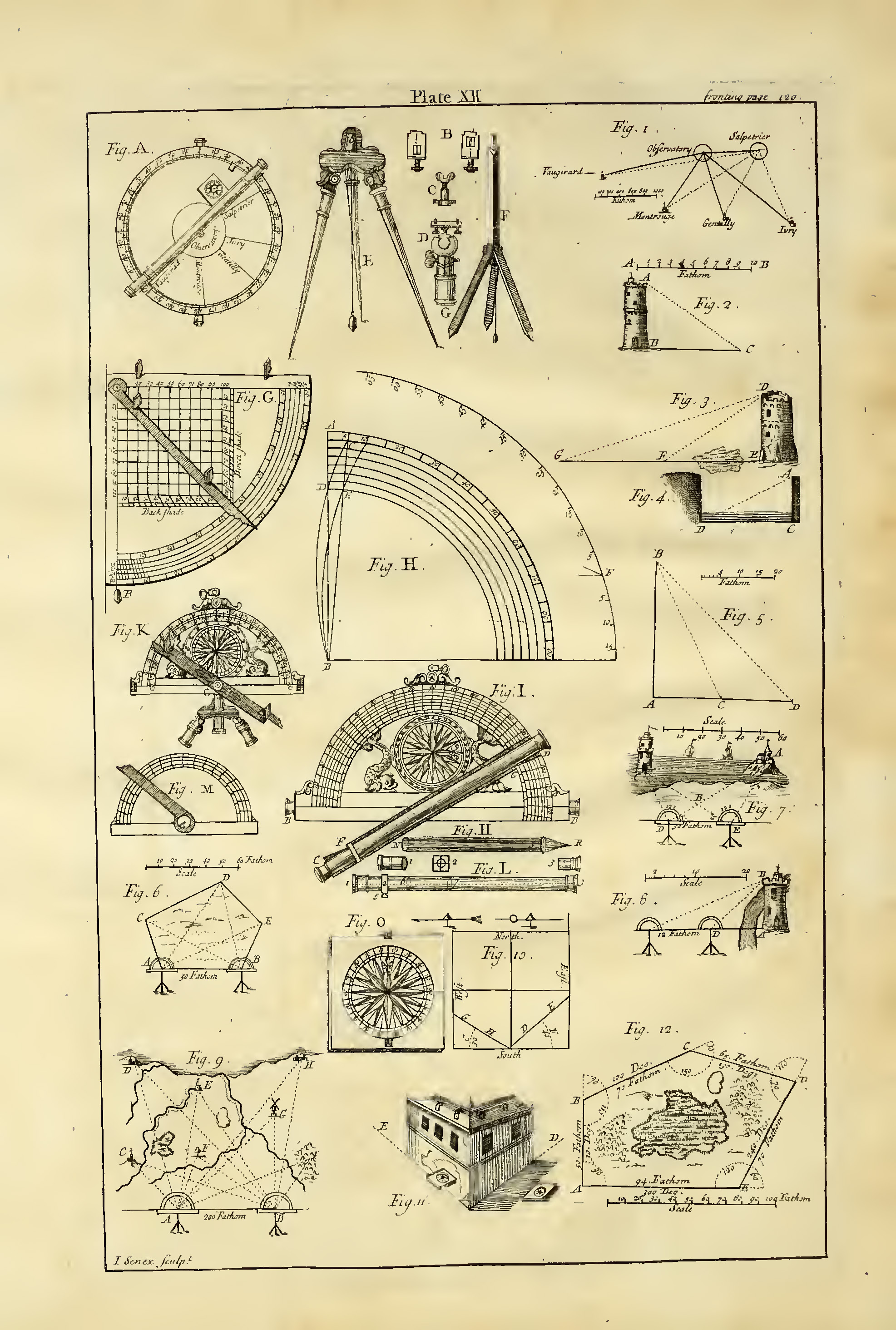
A circa 1700 Graphometer - Probably Made in Germany
The Graphometer - Semicircle
Based on survival rates, I suspect that there were more Graphometers/Semicircles made before 1750 that Theodolites. Graphometers were the instrument of choice for many Continental European countries, especially in France. While the British preferred Theodolites, the population of France dwarfed that of England, which is the main reason why I believe there were more Graphhometers produced than Theodolites before 1750. Graphometers faded pretty quickly after 1750 to 1800, once the English Altazimuth Theodolite (with the superior achromatic lenses) started to be produced in quantity.
The Graphometer/Semicircle is similar in principle to a simple theodolite, but with a semicircle divided into degrees instead of a full circle. There are four sights: the diameter of the semicircle has fixed sights at either end, while at the centre of this diameter a pivot carries a sighting rule or alidade that moves across the divided semicircle.
In early examples the compass is small, is incorporated into the pivot and is used for orientation; later, larger compasses were set in the central space of the semicircle and had a divided scale beneath the needle so that the instrument could also be used as a circumferentor or surveying compass, by sighting with the fixed sights. In the earlier instruments these fixed sights were used only for aligning the instrument with another station, though with the instrument mounted vertically they could have a levelling function.
The use of different orientations - vertical as well as horizontal - is explained in the treatise, Declaration de l'usage du graphometre (Paris, 1597), by Philippe Danfrie, who designed the instrument.
NOTE: In 1600 to 1800 these instruments were often but not always called Graphometers in France and other Continental European countries. In England (and early America) they were more often called Semicircles. If you are searching the internet for these instruments you will need to use the foreign language equivalents of Graphometer and Semicircle (e.g., Graphometre in France).
(The above borrows heavily from the EPACT Glossary - Epact is an electronic catalogue of medieval and renaissance scientific instruments from four European museums: the Museum of the History of Science, Oxford, the Istituto e Museo di Storia della Scienza, Florence, the British Museum, London, and the Museum Boerhaave, Leiden. Together, these museums house the finest collections of early scientific instruments in the world.)
The Basic Design Differences
The standard design of the Graphometer didn't change much from Danfrie's 1597 illustration until Graphometers/Semicircles started to phase out of production after 1800. Basically, Danfrie pretty much mailed the design in the late 16th century. The first two pics below show the very simple design of a standard Graphometer/Semicircle. The Butterfield Graphometer on the left has a ring, which means that the surveyor could hang the Graphometer vertically and measure vertical angles. The Marquart Graphometer on the right doesn't have the ring, so it wasn't designed to measure vertical angles. Both the Butterfield and Marquart Graphometers have two divided 180 degree circles - which were offset by half-degrees. This made it easy to read a degree to 30 minutes, and approximate it to every 15 minutes or so. I believe this is a fairly common feature on early French Graphometers.
The next two pics down show a Langlois and a Bion Graphometer. The Langlois has concentric circles while the Bion has diagonals. These approaches allowed surveyors to read degrees to every 6 minutes. In theory this was a pretty nifty approach to making the instrument more precise. The implementation of the approaches was generally wanting, however. As Norwood pointed out at page 80 et seq. in his 1639 book on Fortifications, the mathematics behind the concentric circles and diagonals approach were fairly complicated, with many makers likely missing the mark. Over time most makers opted to use a vernier system instead of the concentric circle and diagonals system.
The final two pics below show the use of telescopes on Graphometers made by Marquart and Ferat. Makers put telescopes on Graphometers fairly early on, certainly prior to 1700. If a Graphometer has a telescope, most of the time it will have two telescopes. Neither telescope will measure vertical angles, however (unless suspended by a ring). The top telescope simply replaces the sight vanes - there is no vertical arc. The bottom telescope is used to make sure that the instrument didn't move while the surveyor used the Graphometer. (You fix the bottom scope on an object, use the Graphometer to measure angles, and then recheck the bottom scope to make sure it is still fixed on the object).
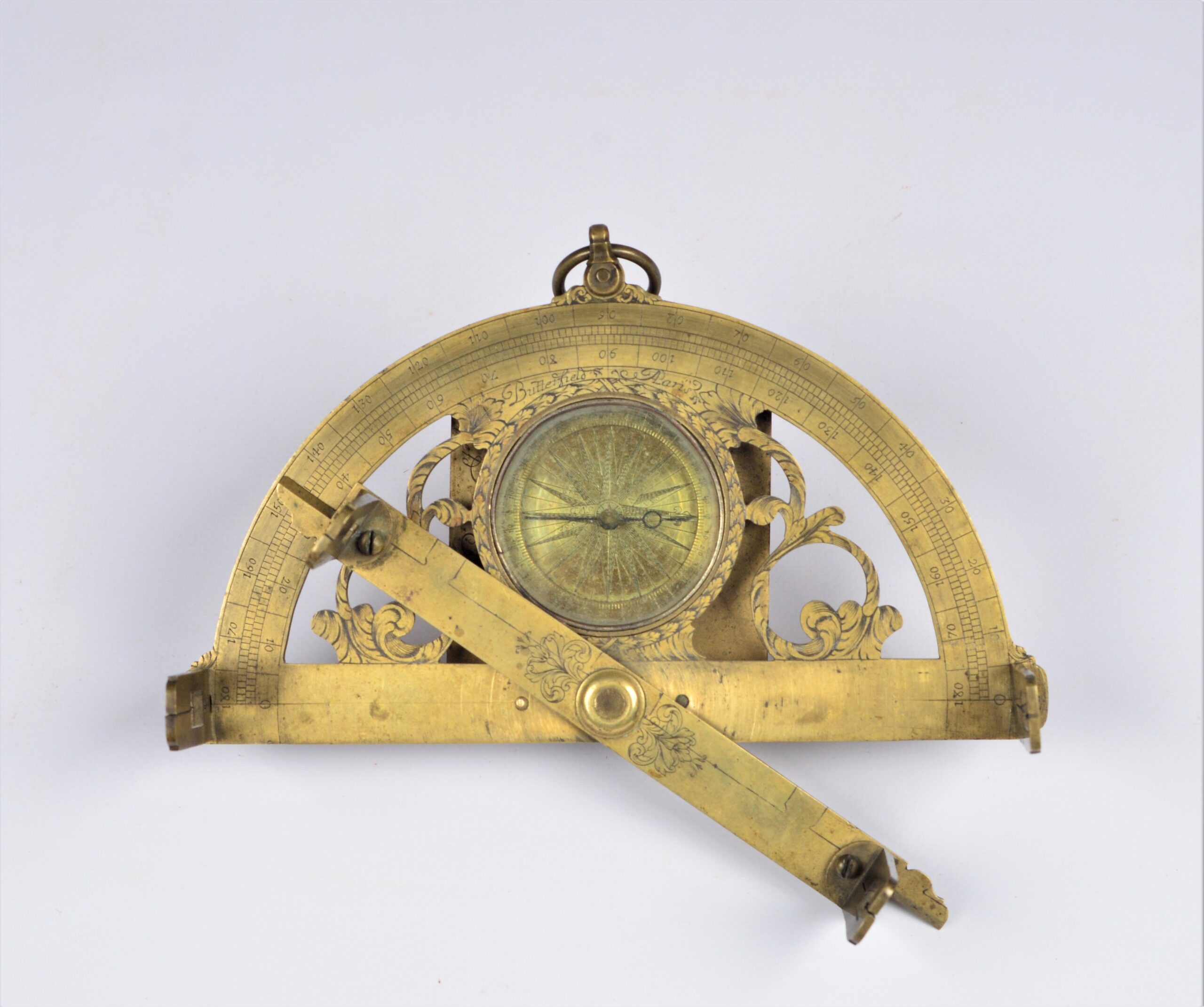
Circa 1700 Graphometer by Butterfield - Note Ring at Top - Allows the Surveyor to Measure Vertical Angles
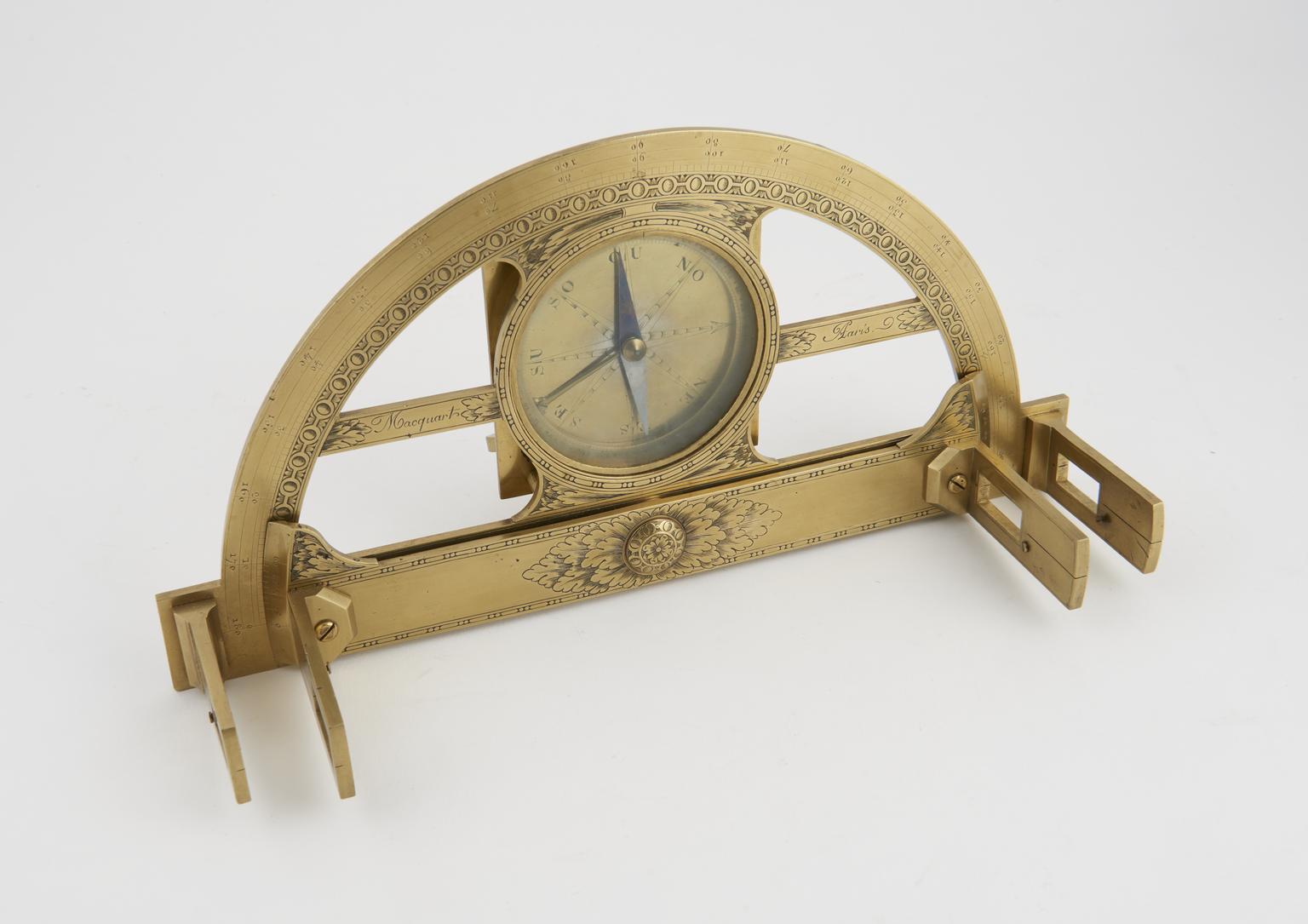
Circa 1720s Graphometer by Marquart

Circa 1720 Graphometer by Langlois with Transversals

Circa 1700 Graphometer by Bion with Transversals
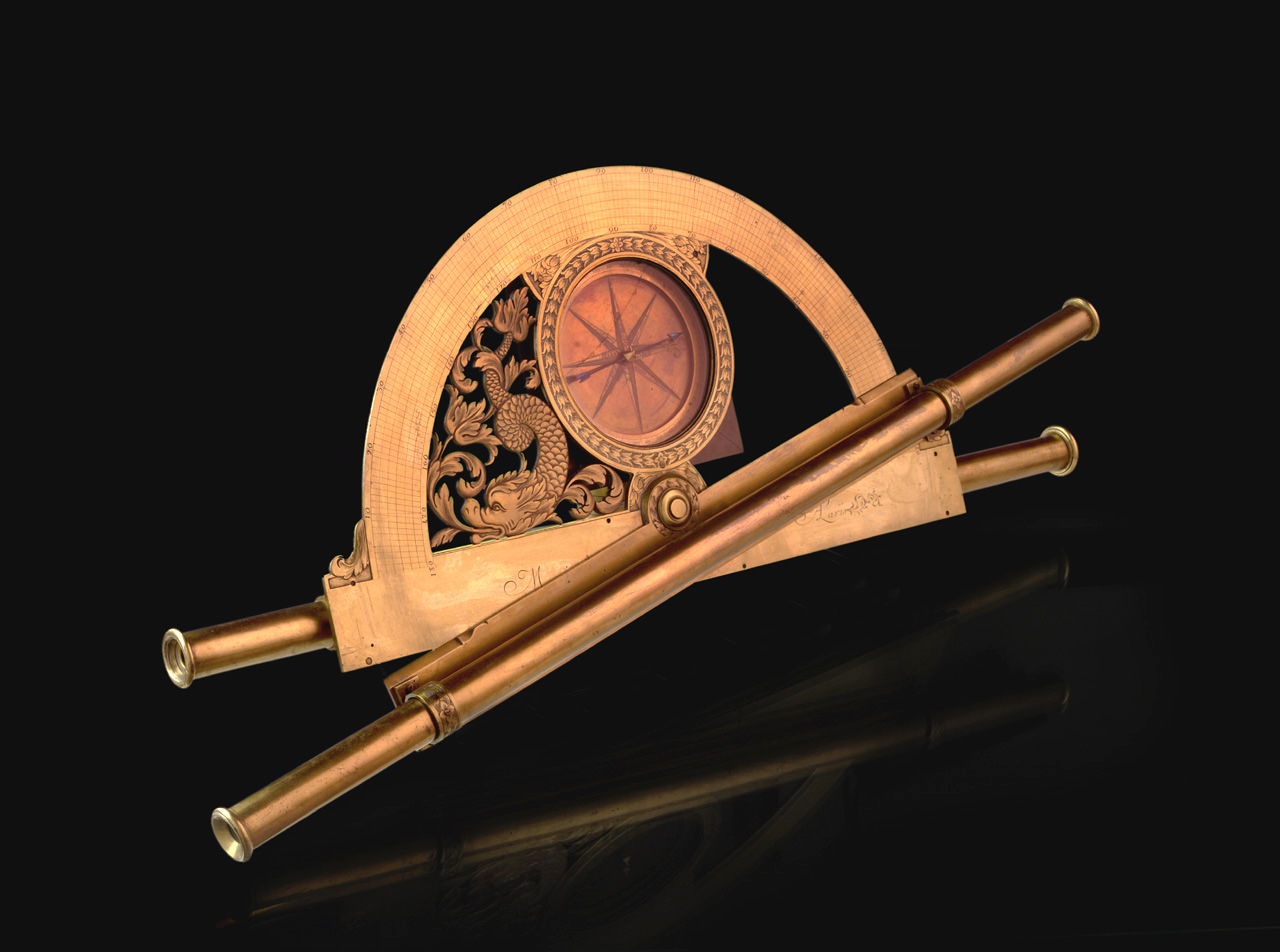
Circa 1730s Graphometer by Marquart with Two Telescopes - Doesn't Measure Vertical Angles
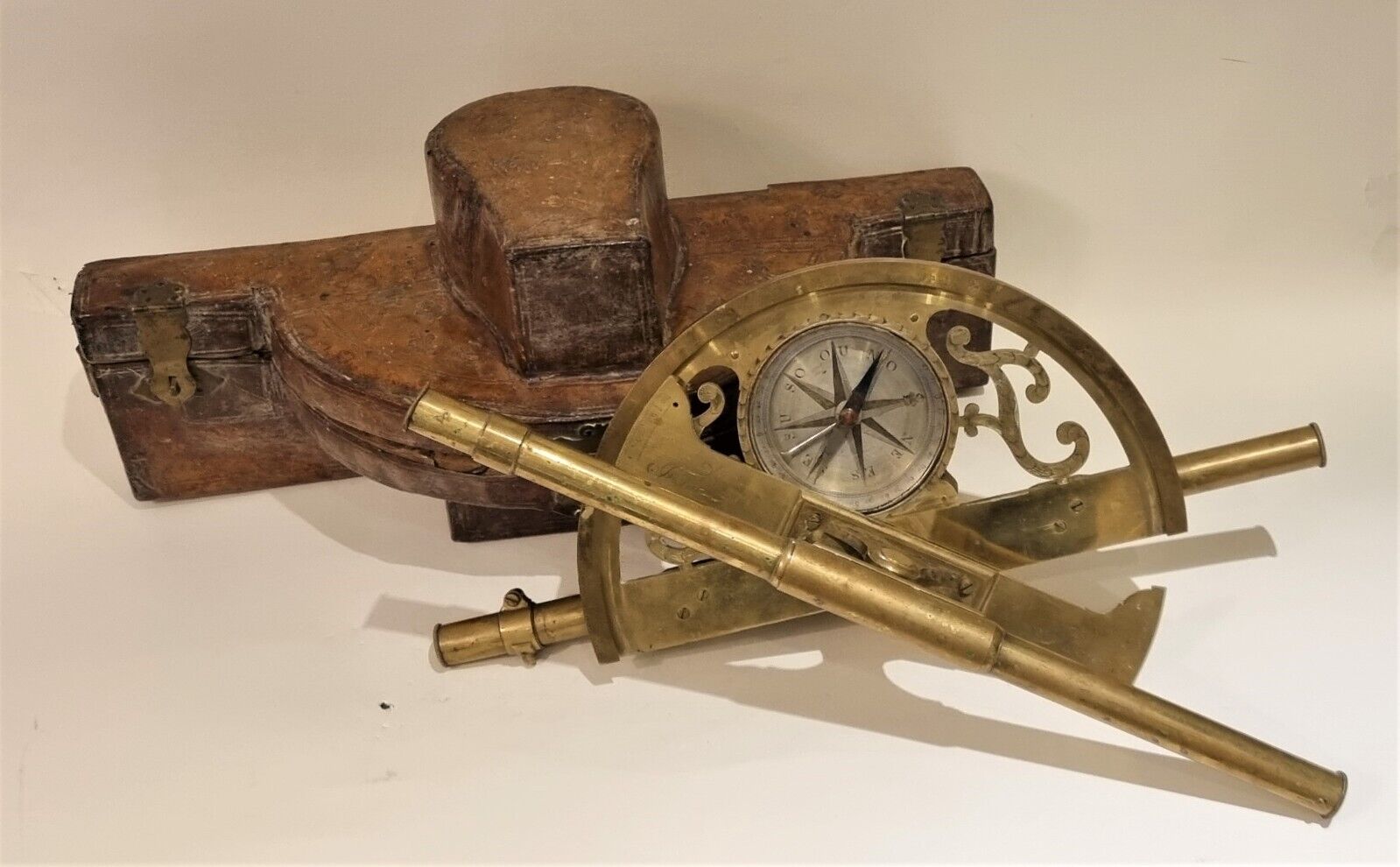
Circa 1780s Graphometer by Ferat with Two Telescopes - Doesn't Measure Vertical Angles
Graphometers As An Art Form
Surveying instruments are tools, and therefore rarely qualify as art objects. Moreover, there is typically little variation in design for each class of instrument. For the most part, it is hard to distinguish at a glance one theodolite from another, one surveyors compass from another, or one transit from another.
Graphometers are a different animal, however. Maybe it's the French artistic influence. Or maybe the Graphometer offers a form factor that allows a maker to add artistic flourishes. Or maybe it's both. Whatever the reason, a meaningful percentage of Graphometers qualify as works of art to my eye, and are priced accordingly.
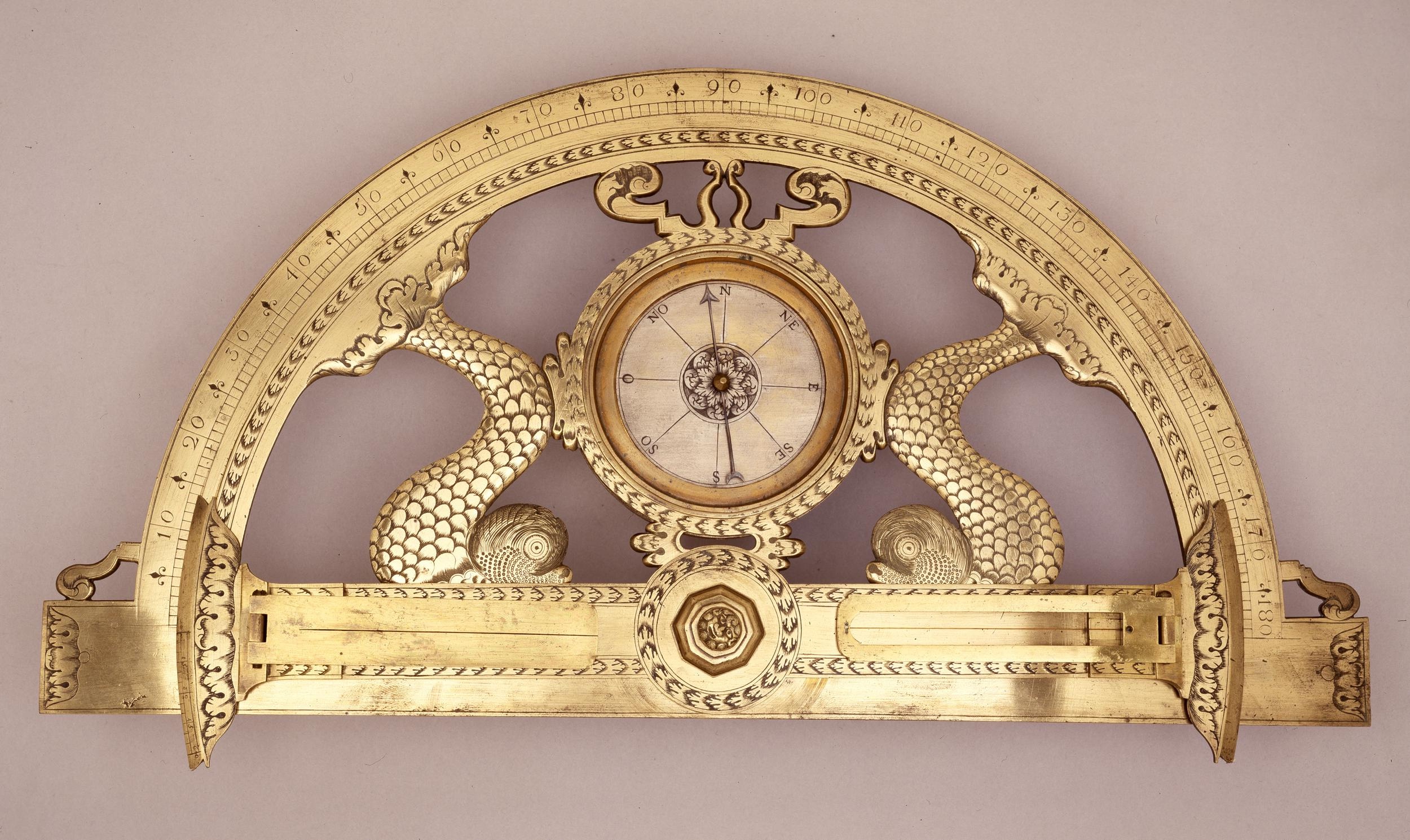
French Graphometer with Dauphins - To Honor French Royal Family
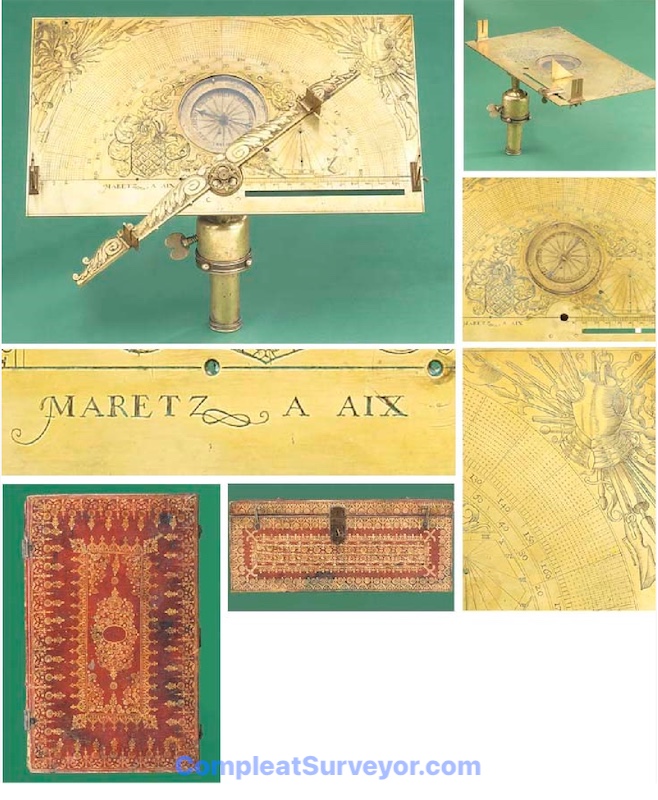
Circa 1630s Graphometer by Maretz of Aix-Marseille
Sold for About $41k
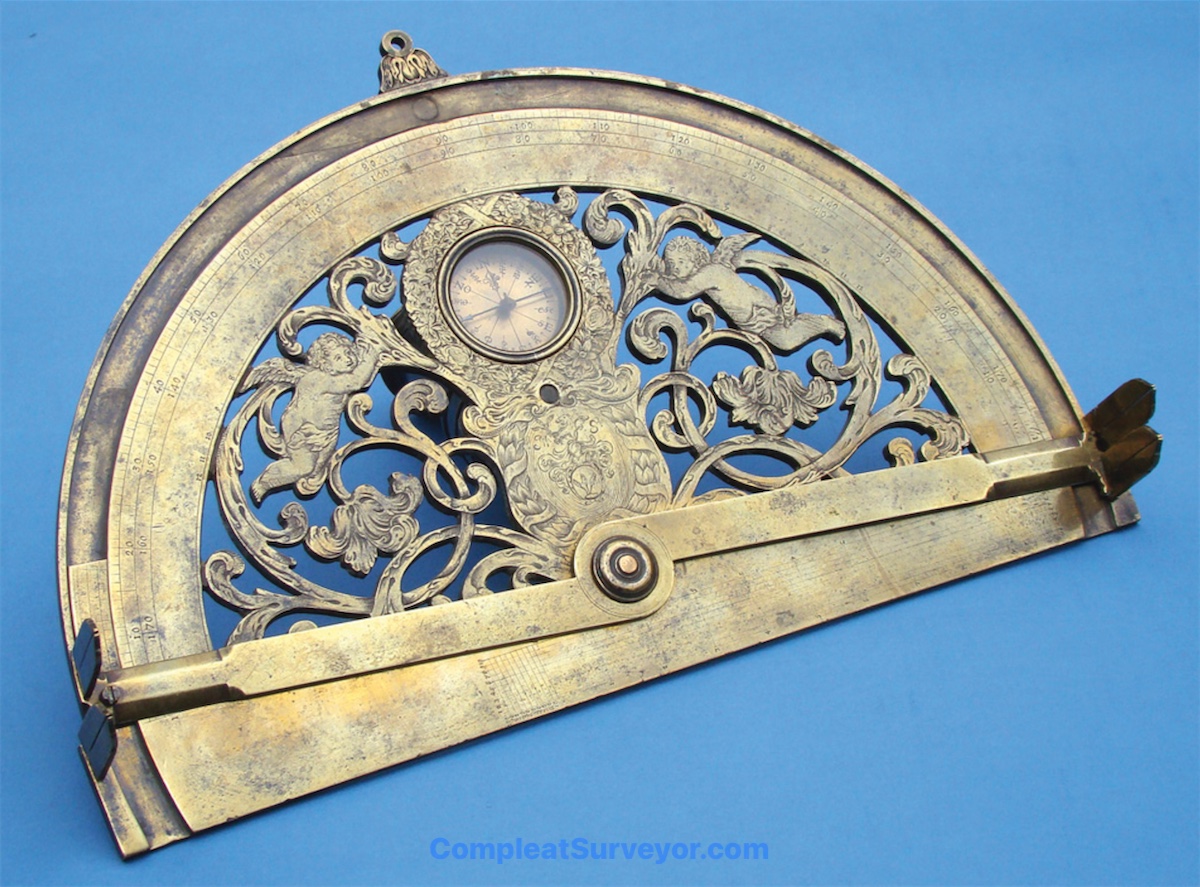
17th Century Graphometer - Made in Germany
Offered for Sale at $31k

Likely Early French, with Two Telecopes

Early 1700s Butterfield Graphometer with Dauphins and Concentric Circles
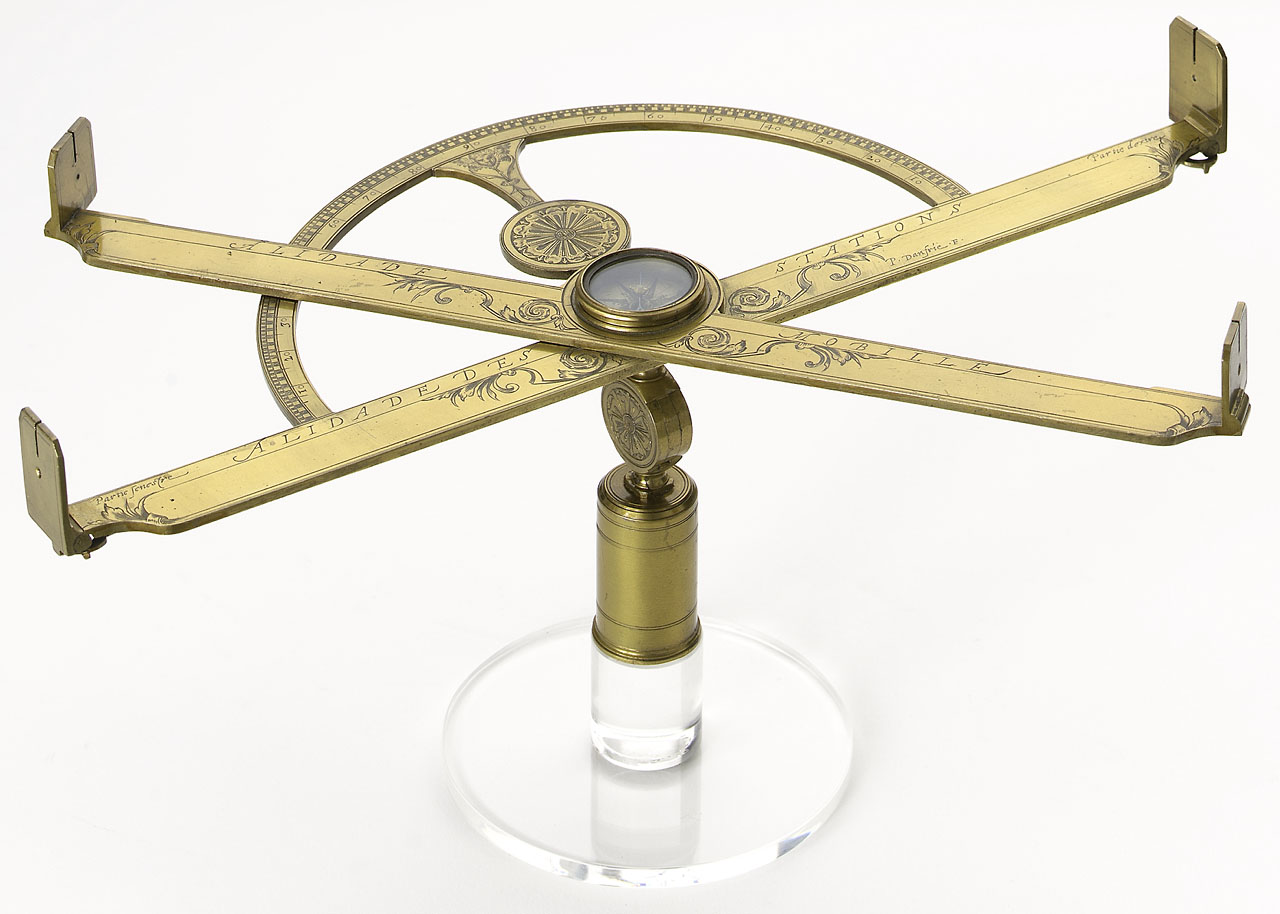
Elegant Graphometer by the Inventor Danfrie - Circa 1590s
Graphometers & SemiCircles Made Outside of France
France was unquestionably the leader in producing Graphometers. Other Continental European countries produced Graphometers as well, but not nearly in the numbers produced in France. France had a very large population compared to most other countries, so it's not surprising that France produced by far the most Graphometers.
While Theodolites were much more popular in England than Semicircles, English makers still made Semicircles to meet the demand.
It's worth noting that early Americans imported some Graphometers and Semicircles, and some American makers made semicircles, mostly out of work. See my webpage discussing this by clicking here.
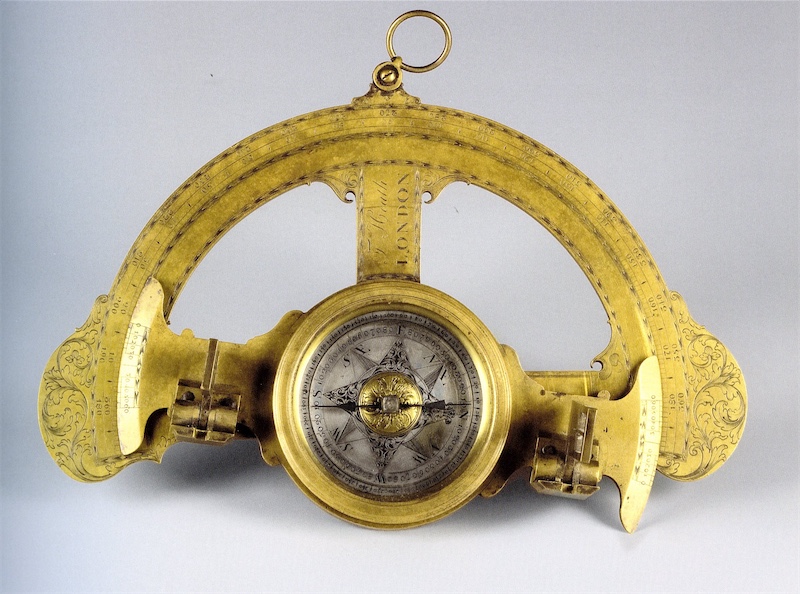
Circa 1720 Semicircle Made by Heath of London

Circa 1730 Ad by Culpepper of London Showing a Semicircle at Top Right Corner
Collectability
I view Graphometers/Semicircles as highly collectable instruments for these reasons:
1. They were used and made in America. Thomas Jefferson owned a couple, and the president of Harvard circa 1740 owned a Bion Graphometer. They were popular instruments in various places in colonial America.
2. These were very popular instruments when new, and they were made in quantity. They are very affordable as a result - you can buy a high quality 275 year old surveying instrument that will look great in your bookcase for about $1000.
3. Unlike most surveying instruments some Graphometers qualify as true works of art. The physical structure of Graphometers allowed makers to add artistic flourishes to the area inside the semicircle. The artistry displayed by some makers is simply amazing. Expect to pay a good deal for these artistic instruments - but they are 17th and 18th century Masterpieces!
Important Books - Graphometers and Semicircles
Below are some of the important books related to the Graphometer.
The importance of Danfrie's 1597 book (where he introduced the Graphometer) cannot be overstated. The Graphometer (aka the Semicircle) was one of the most used surveying instruments in Europe and even saw duty in the Americas. The fact that the design of the Graphometer changed little over a 250 year run shows the impact that Danfrie had on surveying. Danfrie's book has never been translated into English unfortunately. Expect to pay more than $5k if you want to own hardcopy of the 1597 book, assuming you can find a hardcopy. The book only had one edition.
Henrion's Mecometre published in 1630 describes how to use a Graphometer, and includes a neat very early plate showing a Graphometer with the Concentric Circles used to read degrees into 6 minute increments.
Love's Geodaesia first published in 1688 discusses how to use a Semicircle. This book was republished numerous times - 13 editions I believe, with several American editions. Geodaesia was a pretty important book for early American surveyors, and perhaps helps explain why there were a fair number of Semicircles and Graphometers made in and imported into America.
Another interesting book related to the Graphometer is Bion's landmark Mathematical Instruments book, first published in French in 1709. Edmund Stone translated this important book into English in 1723, and a digitized copy of the 1723 book appears below. The English version is a must have book for instrument collectors. Bion describes how to use the Graphometer in his book.
My Reference Materials
Here are the main reference books I used while researching my Ancient Surveying Webpages:
5-Volume Catalogue Of The Most Important Worldwide Private Collection Of Scientific Instruments (With 928 Color Illustrations). Written in German, but an amazing reference tool. The pictures are incredible - most of the instruments are not found on the internet. Crazy Expensive.
Bennett's Catalogue of Surveying and Related Instruments (2022). Fantastic pics and info about the surveying related instruments at the Galileo Museum (which has an INCREDIBLE collection of early instruments).
Bennett's The Divided Circle (1987). A History of Astronomy, Navigation and Surveying Instruments.
Delalande Antiques Two Volume book series on Astrolabes. The two volumes walk you thru how to use and collect Astrolabes. A must have if you want to collect Astrolabes.
Kiely's Surveying Instruments - Their History (1947) Somewhat dated now, but still has a great deal of relevant information. Not the easiest read, however.
Daumas' Scientific Instruments of the 17th and 18th Centuries (Translated into English 1972).
Richeson's English Land Measuring to 1800 (1966). A nice book that is mis-paginated unfortunately. But still contains some good information about early English land surveying.
Important Websites where you can use the search function (e.g. "Theodolite") to find instruments:
The Museo Galileo Virtual Museum - A Stunning Collection of Early Surveying Instruments
The Science Museum Group (UK Based)
Harvard University Collection of Scientific Instruments
The Museum of History and Science, Oxford
© 2020 Russ Uzes/Contact Me
